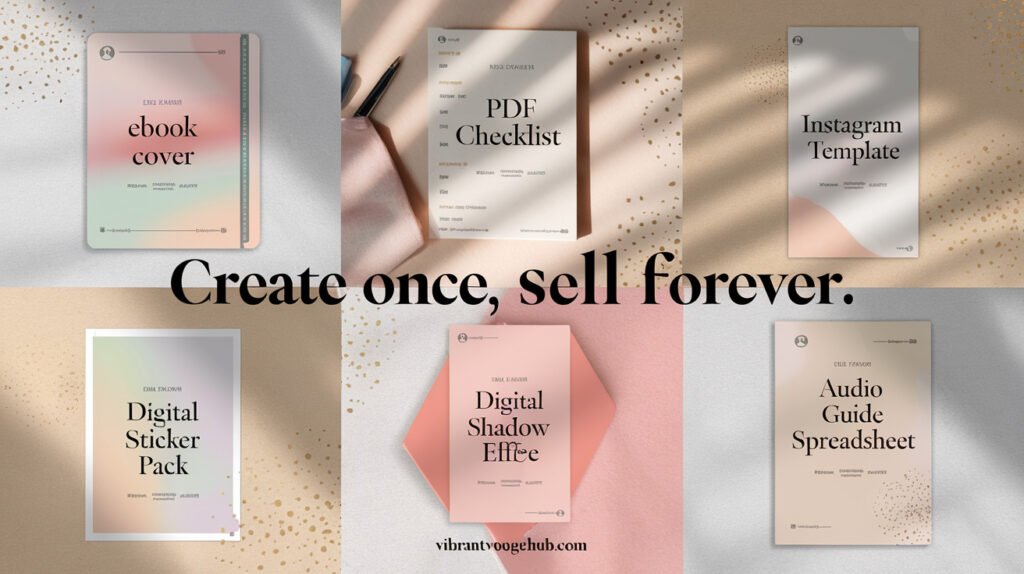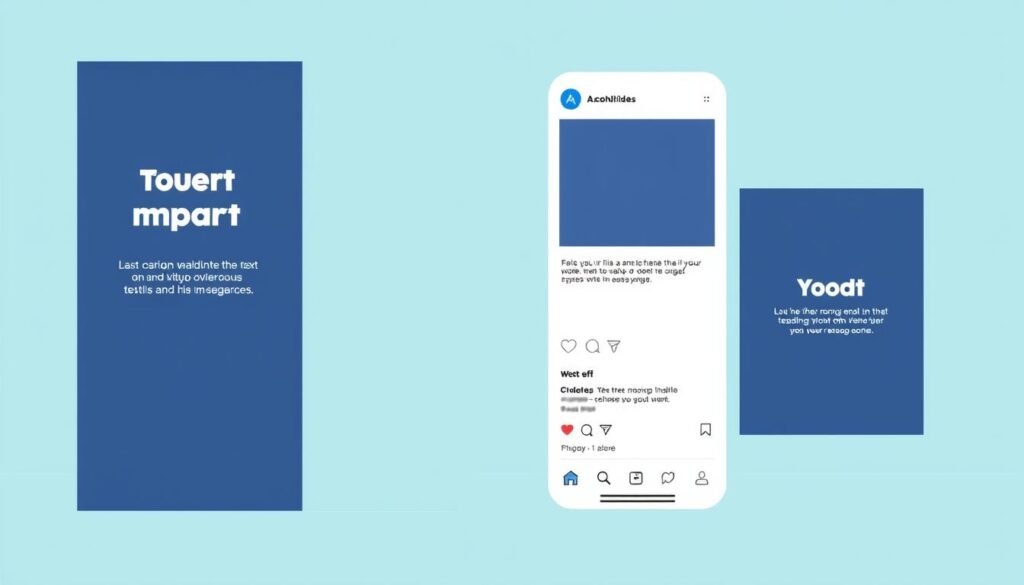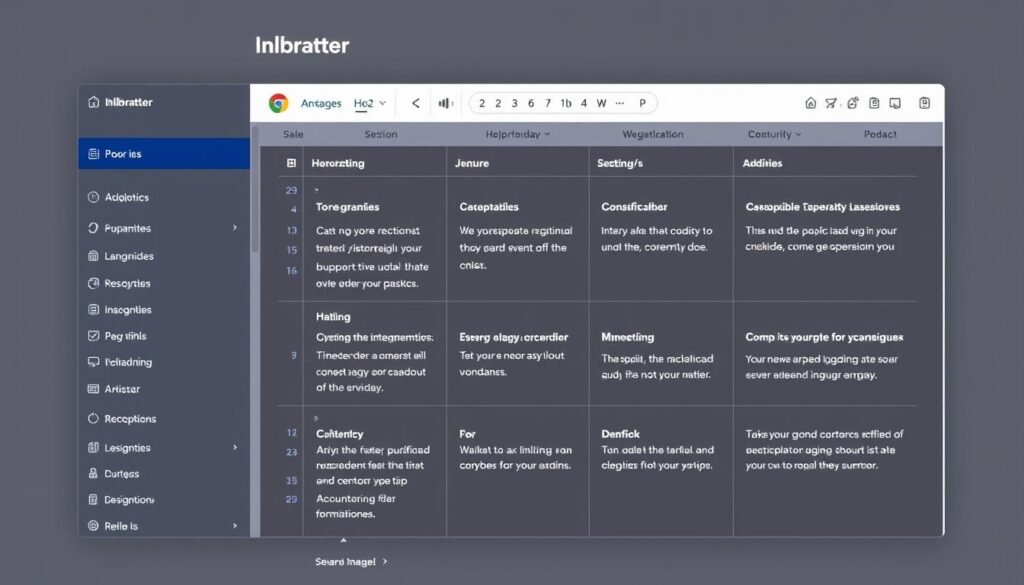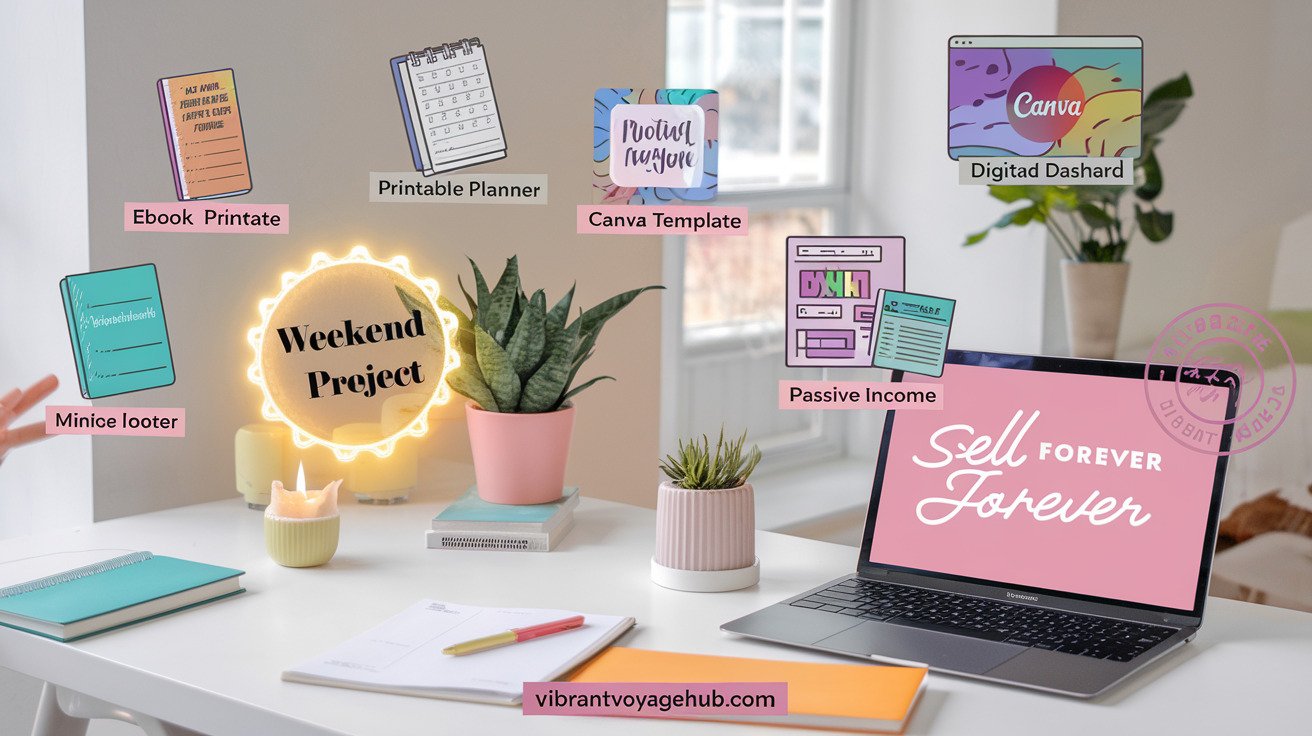Can You Really Build a Profitable Business in Just a Few Days?
Imagine being able to create valuable assets that generate income for years to come, all within a short span of a weekend. The idea may seem too good to be true, but it’s a reality for many creators who have turned to digital products as a lucrative side hustle.
With the rise of the digital age, it’s become increasingly accessible for individuals of all experience levels to create and sell digital products, enjoying benefits such as low overhead, scalability, and passive income potential.
This article will explore six specific digital products that can be realistically created over a weekend, along with practical tips for their creation, promotion, and sale.
Key Takeaways
- Discover six profitable digital products to create over a weekend.
- Learn how to create digital products with low overhead costs.
- Understand the potential for passive income through digital sales.
- Explore practical tips for promoting and selling digital products.
- Find out how to scale your digital product business.
Why Digital Products Are the Perfect Side Hustle
In today’s digital landscape, creating digital products is a savvy way to generate passive income and grow your business. You can leverage your skills and knowledge to create valuable digital products that appeal to your target audience.
The Power of Passive Income
One of the most significant advantages of digital products is their ability to generate passive income. You create a product once, and it can be sold repeatedly without requiring additional work. This means you can earn money while you sleep, unlike service-based businesses that demand constant time investment. With digital products, you can scale your income infinitely, selling to 10 people or 10,000 with virtually the same effort.
Diversifying Your Revenue Streams
Diversifying your revenue streams is crucial for financial stability and resilience. By creating multiple digital products, you can mitigate risk and increase income stability. This approach allows you to reach different audience segments at various price points, complementing other business models like newsletters, blogs, or service-based businesses. Moreover, digital products have low overhead and high profit margins compared to physical products, making them an attractive addition to your business.
By incorporating digital products into your business strategy, you can monetize your existing knowledge and skills without trading time for money. This flexibility enables you to focus on other aspects of your business, driving growth and profitability.
Can You Really Create Digital Products in Just One Weekend?
With focused effort, you can create a digital product that delivers real value in just a weekend. The key is to be strategic about how you allocate your time and what you aim to achieve.
The “Weekend Product Method” offers a framework for creating valuable digital products in a compressed timeframe. This approach emphasizes the importance of focusing on a single problem and solving it exceptionally well, rather than trying to cover multiple topics superficially.
The Weekend Product Method
The Weekend Product Method is centered around simplicity and effectiveness. By concentrating on one specific issue, you can develop a product that meets the needs of your target audience without feeling overwhelmed by the scope of the project.
- Identify a specific problem your audience faces.
- Develop a solution that addresses this problem directly.
- Keep your product focused and straightforward.
Setting Realistic Expectations
It’s crucial to understand that the goal of the Weekend Product Method isn’t to create a perfect product but a minimum viable product (MVP) that delivers real value. This approach allows you to get your product to market quickly, gather feedback, and iterate.
By allocating your weekend hours effectively, you can make significant progress on your digital product. A simple timeline could be:
- Saturday morning: Research and planning.
- Saturday afternoon: Content creation.
- Sunday: Finalize and polish your product.

Even simple products created in a weekend can generate significant revenue when they solve real problems. The key is to be realistic about what you can achieve and to focus on delivering value to your customers.
1. Ebooks and Guides

Ebooks and guides are among the most accessible digital products to create, requiring minimal technical skills. You can leverage your expertise and knowledge to produce high-quality content that resonates with your audience.
How to Choose a Topic That Sells
When selecting a topic for your ebook, it’s essential to choose something you’re knowledgeable about. This could be related to your field of study, career, or a hobby you’re passionate about. Start with what you know to create digital content that adds value to your readers.
Writing and Formatting Tips
To make your ebook engaging, focus on content that is both informative and well-structured. Outlining your ebook with chapters and sections will help you stay organized and ensure consistency for your readers. For formatting, use tools like Canva or Adobe InDesign to give your ebook a professional look without needing extensive design experience.
Promoting and Selling Your Ebook
Once your ebook is ready, it’s time to promote and sell it. You can use email marketing campaigns to reach potential buyers, or leverage social media platforms to increase visibility. Consider listing your ebook on platforms like Etsy, as discussed in our guide on digital products to sell on Etsy. Pricing strategies will depend on the value your ebook offers, so research your competition and target audience to position your product effectively.
By following these steps, you can successfully create digital ebooks and guides that appeal to your target audience and generate product ideas for future content.
2. Online Courses

You can turn your expertise into a profitable online course. With the rise of online learning, creating a course has become an attractive way to share your knowledge and earn passive income. The best part is that you don’t need to be an expert in a specific field; you can start with something you’re passionate about or have experience in.
Identifying Your Expertise
To create a successful online course, you need to identify your teachable expertise. Start by analyzing what people already ask you for help with. This could be related to your career, a hobby, or something you’ve studied. The key is to find the intersection of your knowledge, passions, and a profitable niche. For instance, if you’re skilled in photography, you could create a course on basic photography techniques.
Creating Engaging Course Content
To appeal to a wide range of students, offer content in multiple formats, such as videos, audio files, readings, and images. This approach caters to different learning styles, including visual, audio, and kinesthetic. When creating your course content, focus on solving one specific problem rather than trying to cover everything. This will help you structure a focused course that provides significant value to your students.
For example, instead of creating a comprehensive course on marketing, you could create a mini-course on “How to Create an Effective Social Media Campaign.” This focused approach allows you to create a valuable course within a short timeframe, such as a weekend.
Choosing a Platform to Host Your Course
Once you’ve created your course content, you need to choose a platform to host it. Popular options include Udemy, Teachable, and Kajabi. Each platform has its pros and cons, so it’s essential to research and choose the one that best suits your needs. Consider factors such as ease of use, fees, and customer support when making your decision.
When pricing your course, consider the value it provides to students, as well as the competition in your niche. You can start with a low price to attract initial customers and gather feedback, then adjust your pricing strategy accordingly.
3. Printables and Worksheets

You can kickstart your digital product journey with printables and worksheets, which can be created and sold online with relative ease. The beauty of these products lies in their versatility and the minimal time required to create them.
Types of Printables That Sell Well
The sky’s the limit when it comes to what kind of printable or worksheet you can create. Some general categories include checklists, planners, goal-setting templates, calendars, budget tracking sheets, coloring sheets, and journaling prompts. These categories cater to various needs and preferences, making them appealing to a broad audience.
Designing Attractive and Functional Products
When designing printables that are both functional and attractive, first consider what will truly help your audience. What information do they need, or what pillars need to be included for your worksheet to bring them value? To determine this, you may need to conduct some surveying or market research to understand their needs and preferences.
Utilizing free tools like Canva can help you create professional-looking printables without extensive design experience. Canva offers a wide range of templates and design elements that can be customized to fit your brand and product.
Marketing Your Printables
Once you have created your printables, it’s time to market them. You can sell your digital products on platforms like Etsy, your own website, or through social media channels. Creating bundles or collections can also enhance the appeal of your products and increase sales.
To maximize your reach, consider offering your printables as affordable entry points to your more expensive digital products. This strategy can help you attract a wider audience and build a loyal customer base.
4. Stock Photos and Graphics

Creating a stock photo collection can be a lucrative digital product idea that can generate passive income for years to come. As a photographer or graphic designer, you can leverage your existing skills to create a marketable stock collection in just a weekend.
Building a Cohesive Collection
To build a cohesive collection, you need to select a common denominator, such as a specific place, color palette, or subject. Consider your audience or niche, as well as your brand identity, when deciding how to group your artwork. Once you have an overall aesthetic vision, start gathering options and pare down to images that showcase your range while staying consistent and balanced.
Tips for Shooting and Editing
When shooting stock photos, consider factors such as diversity in models, avoiding unnecessary clutter or distractions, carefully-considered props, and leaving space for text overlay. To edit your photos efficiently, maintain a consistent style by using similar editing techniques and software. This will help you to create a cohesive look and feel for your collection.
Selling on Stock Photo Websites
To sell your stock photos online, you need to prepare them according to the technical requirements of stock websites. Research different stock photography platforms, such as Shutterstock, iStock, or Adobe Stock, and compare their commission structures. You can also optimize your earnings by creating metadata and descriptions that help your stock content get discovered.
By following these tips, you can create a successful stock photo collection that generates passive income for years with minimal ongoing effort. With the right strategy and a bit of creativity, you can turn your photography or graphic design skills into a profitable digital product.
5. Templates and Themes

With the rise of digital marketing, the demand for customizable templates has skyrocketed. Templates save people time and solve design challenges, making them valuable digital products. You can create templates for various uses, such as social media posts, email newsletters, and website landing pages.
Popular Template Types
Some of the most profitable template categories include social media templates, presentation templates, website templates, and email templates. For instance, exploring beginner-friendly side hustle ideas can inspire you to create templates that cater to specific niches or industries.
Theme packs, which can be in the form of website themes, wallpapers, or other formats, usually center around a theme or aesthetic, making them appealing to customers looking for cohesive design elements.
Designing User-Friendly Templates
To design user-friendly templates, focus on simplicity and straightforward customization. Your templates should require minimal effort from customers to personalize. This involves creating clear instructions and ensuring that the template is well-structured and easy to navigate.
Providing template documentation that helps users get the maximum value from your product is crucial. This can include step-by-step guides, video tutorials, or FAQs that address common questions and issues.
Promoting Your Templates on Marketplaces
When selling templates, you have the option to use various marketplaces, each with its commission structure. Popular marketplaces include Creative Market, ThemeForest, and Etsy. It’s essential to compare these platforms to determine which one best suits your business needs.
Bundling templates can increase perceived value and allow you to charge higher price points. This strategy involves packaging multiple related templates together, making the offer more attractive to potential buyers.
Creating templates can be achieved over a weekend, but with proper marketing and sales strategies, they can generate ongoing passive income. Many successful template creators started with weekend projects, demonstrating the potential for growth in this digital product niche.
6. Digital Planners and Journals

In the realm of digital products, planners and journals stand out as highly sought-after items, especially among tablet users and digital note-takers. The demand for these organizational tools is on the rise, driven by the need for better time management and personalized organization systems.
Creating Functional and Visually Appealing Designs
To create a successful digital planner, you need to focus on both functionality and aesthetics. Use tools like Keynote, PowerPoint, or Canva to design hyperlinked digital planners that are easy to navigate. Intuitive navigation is key to a good user experience, so ensure that your planner is both visually appealing and functional.
Tips for designing intuitive navigation include using clear headings, creating a consistent layout, and incorporating hyperlinks to facilitate easy movement between sections.
Offering Customization Options
One way to increase the value of your digital planners is by offering customization options. This can include editable headers, customizable layouts, and varied color schemes. By allowing users to personalize their planners, you can cater to a wider audience and enhance user satisfaction.
Marketing Your Digital Planners
Effective marketing is crucial for the success of your digital planners. Utilize platforms like Etsy, Instagram, and Pinterest to showcase your products. Create product demonstrations that highlight the functionality and benefits of your planners. Share testimonials from satisfied customers and consider offering free samples to attract potential buyers.
Pricing strategies also play a significant role in marketing. Research your competition and position your digital planners competitively. Consider offering bundle deals or discounts for first-time buyers to incentivize sales.
6 Digital Products You Can Create in a Weekend (& Sell Forever): Getting Started Today
Now that you’ve explored the six digital products you can create in a weekend, it’s time to take the first step towards turning your ideas into reality. The approach to creating a successful digital product is built on four core principles: solving one specific problem exceptionally well, creating for implementation rather than comprehensiveness, recording once to sell infinitely, and designing the selling system alongside the product.
To get started, follow a simple step-by-step process. Begin by choosing a digital product type that aligns with your skills and audience needs. Then, dedicate a weekend to creating your product. Here’s a basic schedule: on Friday evening, outline your product; on Saturday, create the content; and on Sunday, finalize and set up your sales system.
To overcome perfectionism, focus on creating a product that delivers consistent value. Use essential tools like design software or writing apps to streamline your product creation process. Before investing a full weekend, test your product idea to ensure there’s a demand for it.

By following these steps and maintaining a focus on taking action, you can successfully create and sell digital products. Remember, the key is to start and continually improve as you gain more experience in the digital product market.
Conclusion
By now, you’re equipped with the knowledge to create digital products that can transform your business and life. We’ve explored six profitable products you can create in a weekend: ebooks, online courses, printables, stock photos, templates, and digital planners. Each of these products offers a unique way to solve specific problems and generate consistent income.
The key to success lies in starting small, focusing on a specific problem, and taking action. Choose one product from the list and commit to creating it this coming weekend. Remember, digital products create assets that can generate income for years to come, supplementing your existing income streams and potentially transforming your business and life.
Share your ideas or success stories in the comments below. For those looking to dive deeper, consider exploring further resources on digital product creation to continue growing your business in the most effective way possible.
FAQ
What kind of digital products can I create to sell online?
How do I choose a profitable topic for my digital product?
Can I really create a digital product over a weekend?
How do I price my digital product?
What are the best platforms to sell my digital products?
How do I market and promote my digital product?
Can I sell digital products if I have no prior experience?
How do I protect my digital products from piracy?
editor's pick
latest video
news via inbox
Nulla turp dis cursus. Integer liberos euismod pretium faucibua




